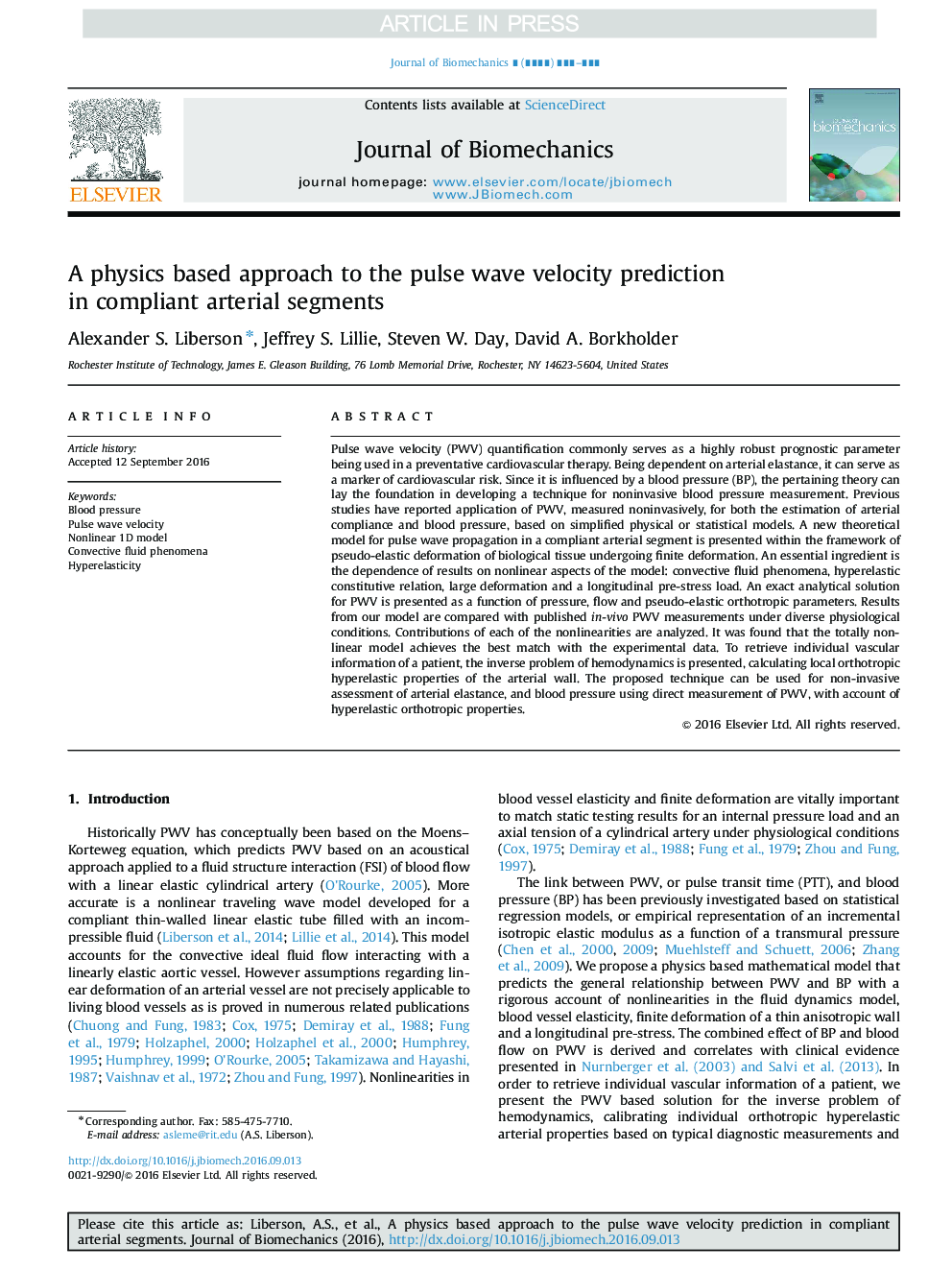| Article ID | Journal | Published Year | Pages | File Type |
|---|---|---|---|---|
| 5032556 | Journal of Biomechanics | 2016 | 7 Pages |
Abstract
Pulse wave velocity (PWV) quantification commonly serves as a highly robust prognostic parameter being used in a preventative cardiovascular therapy. Being dependent on arterial elastance, it can serve as a marker of cardiovascular risk. Since it is influenced by a blood pressure (BP), the pertaining theory can lay the foundation in developing a technique for noninvasive blood pressure measurement. Previous studies have reported application of PWV, measured noninvasively, for both the estimation of arterial compliance and blood pressure, based on simplified physical or statistical models. A new theoretical model for pulse wave propagation in a compliant arterial segment is presented within the framework of pseudo-elastic deformation of biological tissue undergoing finite deformation. An essential ingredient is the dependence of results on nonlinear aspects of the model: convective fluid phenomena, hyperelastic constitutive relation, large deformation and a longitudinal pre-stress load. An exact analytical solution for PWV is presented as a function of pressure, flow and pseudo-elastic orthotropic parameters. Results from our model are compared with published in-vivo PWV measurements under diverse physiological conditions. Contributions of each of the nonlinearities are analyzed. It was found that the totally nonlinear model achieves the best match with the experimental data. To retrieve individual vascular information of a patient, the inverse problem of hemodynamics is presented, calculating local orthotropic hyperelastic properties of the arterial wall. The proposed technique can be used for non-invasive assessment of arterial elastance, and blood pressure using direct measurement of PWV, with account of hyperelastic orthotropic properties.
Related Topics
Physical Sciences and Engineering
Engineering
Biomedical Engineering
Authors
Alexander S. Liberson, Jeffrey S. Lillie, Steven W. Day, David A. Borkholder,
